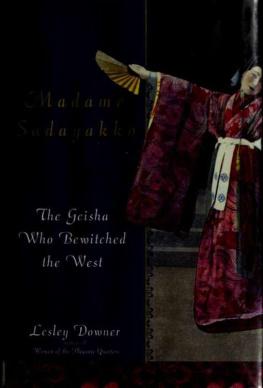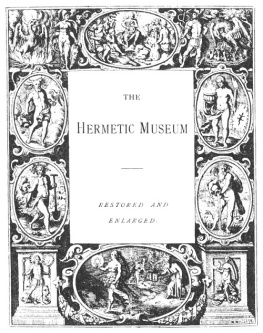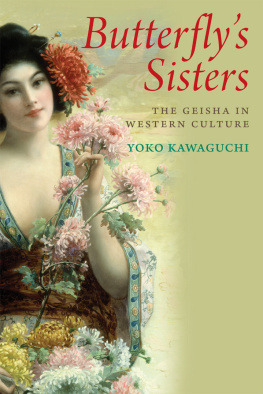Arthur Golden - Memoirs of a Geisha
Here you can read online Arthur Golden - Memoirs of a Geisha full text of the book (entire story) in english for free. Download pdf and epub, get meaning, cover and reviews about this ebook. year: 1999, publisher: Vintage, genre: Art. Description of the work, (preface) as well as reviews are available. Best literature library LitArk.com created for fans of good reading and offers a wide selection of genres:
Romance novel
Science fiction
Adventure
Detective
Science
History
Home and family
Prose
Art
Politics
Computer
Non-fiction
Religion
Business
Children
Humor
Choose a favorite category and find really read worthwhile books. Enjoy immersion in the world of imagination, feel the emotions of the characters or learn something new for yourself, make an fascinating discovery.

- Book:Memoirs of a Geisha
- Author:
- Publisher:Vintage
- Genre:
- Year:1999
- Rating:3 / 5
- Favourites:Add to favourites
- Your mark:
- 60
- 1
- 2
- 3
- 4
- 5
Memoirs of a Geisha: summary, description and annotation
We offer to read an annotation, description, summary or preface (depends on what the author of the book "Memoirs of a Geisha" wrote himself). If you haven't found the necessary information about the book — write in the comments, we will try to find it.
Memoirs of a Geisha — read online for free the complete book (whole text) full work
Below is the text of the book, divided by pages. System saving the place of the last page read, allows you to conveniently read the book "Memoirs of a Geisha" online for free, without having to search again every time where you left off. Put a bookmark, and you can go to the page where you finished reading at any time.
Font size:
Interval:
Bookmark:


contents
For my wife, Trudy,
and my children, Hays and Tess
TRANSLATORS NOTE
One evening in the spring of 1936, when I was a boy of fourteen, my father took me to a dance performance in Kyoto. I remember only two things about it. The first is that he and I were the only Westerners in the audience; we had come from our home in the Netherlands only a few weeks earlier, so I had not yet adjusted to the cultural isolation and still felt it acutely. The second is how pleased I was, after months of intensive study of the Japanese language, to find that I could now understand fragments of the conversations I overheard. As for the young Japanese women dancing on the stage before me, I remember nothing of them except a vague impression of brightly colored kimono. I certainly had no way of knowing that in a time and place as far away as New York City nearly fifty years in the future, one among them would become my good friend and would dictate her extraordinary memoirs to me.
As a historian, I have always regarded memoirs as source material. A memoir provides a record not so much of the memoirist as of the memoirists world. It must differ from biography in that a memoirist can never achieve the perspective that a biographer possesses as a matter of course. Autobiography, if there really is such a thing, is like asking a rabbit to tell us what he looks like hopping through the grasses of the field. How would he know? If we want to hear about the field, on the other hand, no one is in a better circumstance to tell usso long as we keep in mind that we are missing all those things the rabbit was in no position to observe.
I say this with the certainty of an academician who has based a career on such distinctions. And yet I must confess that the memoirs of my dear friend Nitta Sayuri have impelled me to rethink my views. Yes, she does elucidate for us the very secret world in which she livedthe rabbits view of the field, if you will. There may well be no better record of the strange life of a geisha than the one Sayuri offers. But she leaves behind as well a record of herself that is far more complete, more accurate, and more compelling than the lengthy chapter examining her life in the book Glittering Jewels of Japan, or in the various magazine articles about her that have appeared over the years. It seems that at least in the case of this one unusual subject, no one knew the memoirist as well as the memoirist herself.
That Sayuri should have risen to prominence was largely a matter of chance. Other women have led similar lives. The renowned Kato Yukia geisha who captured the heart of George Morgan, nephew of J. Pierpont, and became his bride-in-exile during the first decade of this centurymay have lived a life even more unusual in some ways than Sayuris. But only Sayuri has documented her own saga so completely. For a long while I believed that her choice to do so was a fortuitous accident. If she had remained in Japan, her life would have been too full for her to consider compiling her memoirs. However, in 1956 circumstances in her life led Sayuri to emigrate to the United States. For her remaining forty years, she was a resident of New York Citys Waldorf Towers, where she created for herself an elegant Japanese-style suite on the thirty-second floor. Even then her life continued at its frenetic pace. Her suite saw more than its share of Japanese artists, intellectuals, business figureseven cabinet ministers and a gangster or two. I did not meet her until an acquaintance introduced us in 1985. As a scholar of Japan, I had encountered Sayuris name, though I knew almost nothing about her. Our friendship grew, and she confided in me more and more. One day I asked if she would ever permit her story to be told.
Well, Jakob-san, I might, if its you who records it, she told me.
So it was that we began our task. Sayuri was clear that she wanted to dictate her memoirs rather than write them herself, because, as she explained, she was so accustomed to talking face-to-face that she would hardly know how to proceed with no one in the room to listen. I agreed, and the manuscript was dictated to me over the course of eighteen months. I was never more aware of Sayuris Kyoto dialectin which geisha themselves are called geiko, and kimono are sometimes known as obebethan when I began to wonder how I would render its nuances in translation. But from the very start I felt myself lost in her world. On all but a few occasions we met in the evening; because of long habit, this was the time when Sayuris mind was most alive. Usually she preferred to work in her suite at the Waldorf Towers, but from time to time we met in a private room at a Japanese restaurant on Park Avenue, where she was well known. Our sessions generally lasted two or three hours. Although we tape-recorded each session, her secretary was present to transcribe her dictation as well, which she did very faithfully. But Sayuri never spoke to the tape recorder or to the secretary; she spoke always to me. When she had doubts about where to proceed, I was the one who steered her. I regarded myself as the foundation upon which the enterprise was based and felt that her story would never have been told had I not gained her trust. Now Ive come to see that the truth may be otherwise. Sayuri chose me as her amanuensis, to be sure, but she may have been waiting all along for the right candidate to present himself.
Which brings us to the central question: Why did Sayuri want her story told? Geisha may not take any formal vow of silence, but their existence is predicated on the singularly Japanese conviction that what goes on during the morning in the office and what goes on during the evening behind closed doors bear no relationship to one another, and must always remain compartmentalized and separate. Geisha simply do not talk for the record about their experiences. Like prostitutes, their lower-class counterparts, geisha are often in the unusual position of knowing whether this or that public figure really does put his pants on one leg at a time like everyone else. Probably it is to their credit that these butterflies of the night regard their roles as a kind of public trust, but in any case, the geisha who violates that trust puts herself in an untenable position. Sayuris circumstances in telling her story were unusual, in that no one in Japan had power over her any longer. Her ties with her native country had already been severed. This may tell us, at least in part, why she no longer felt constrained to silence, but it does not tell us why she chose to talk. I was afraid to raise the question with her; what if, in examining her own scruples on the subject, she should change her mind? Even when the manuscript was complete, I felt reluctant to ask. Only after she had received her advance from the publisher did I feel it safe to query her: Why had she wanted to document her life?
What else do I have to do with my time these days? she replied.
As to whether or not her motives were really as simple as this, I leave the reader to decide.
Though she was eager to have her biography recorded, Sayuri did insist upon several conditions. She wanted the manuscript published only after her death and the deaths of several men who had figured prominently in her life. As it turned out, they all predeceased her. It was a great concern of Sayuris that no one be embarrassed by her revelations. Whenever possible I have left names unchanged, though Sayuri did hide the identities of certain men even from me through the convention, rather common among geisha, of referring to customers by means of an epithet. When encountering characters such as Mr. Snowshowerswhose moniker suggests itself because of his dandruffthe reader who believes Sayuri is only trying to amuse may have misunderstood her real intent.
Next pageFont size:
Interval:
Bookmark:
Similar books «Memoirs of a Geisha»
Look at similar books to Memoirs of a Geisha. We have selected literature similar in name and meaning in the hope of providing readers with more options to find new, interesting, not yet read works.
Discussion, reviews of the book Memoirs of a Geisha and just readers' own opinions. Leave your comments, write what you think about the work, its meaning or the main characters. Specify what exactly you liked and what you didn't like, and why you think so.








